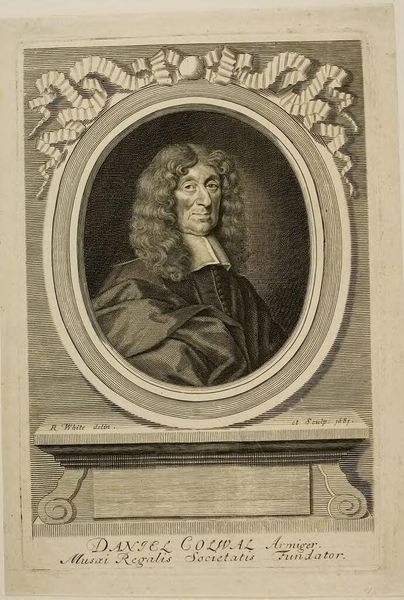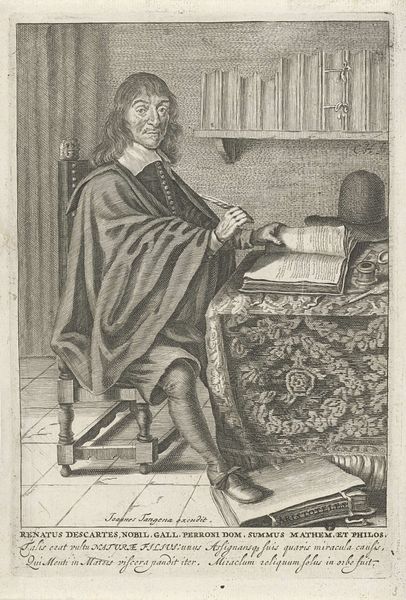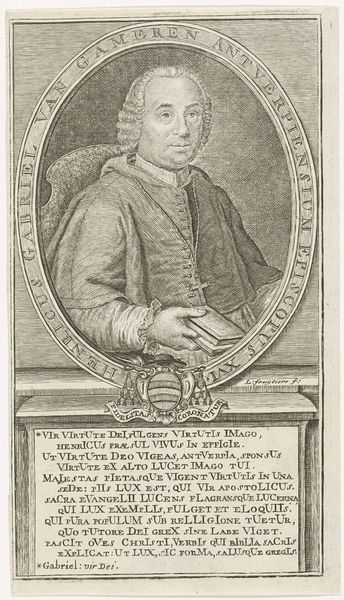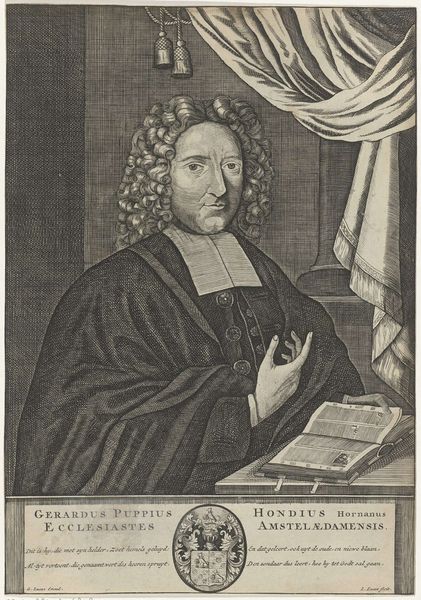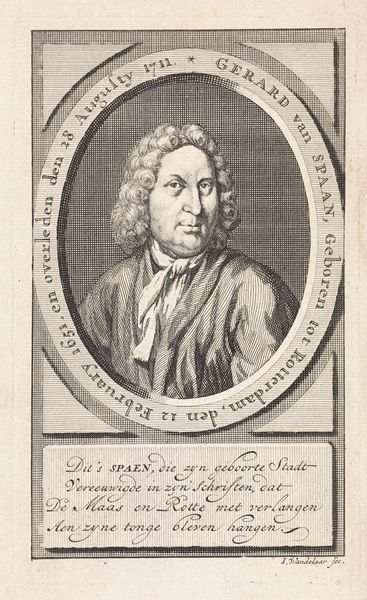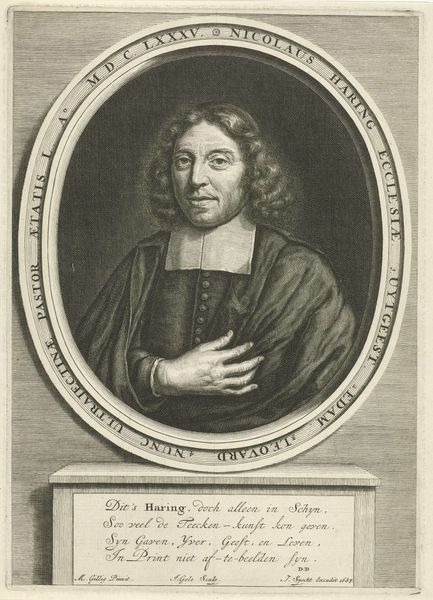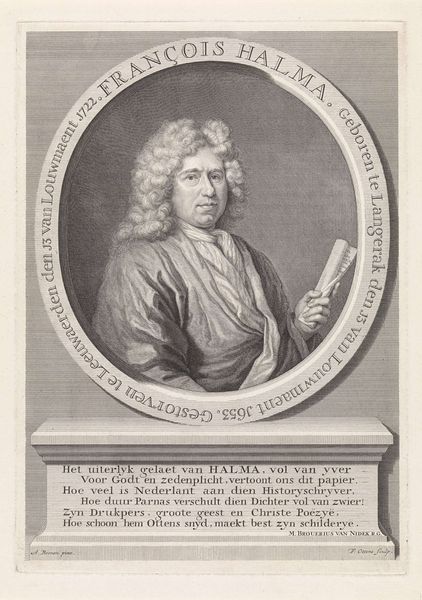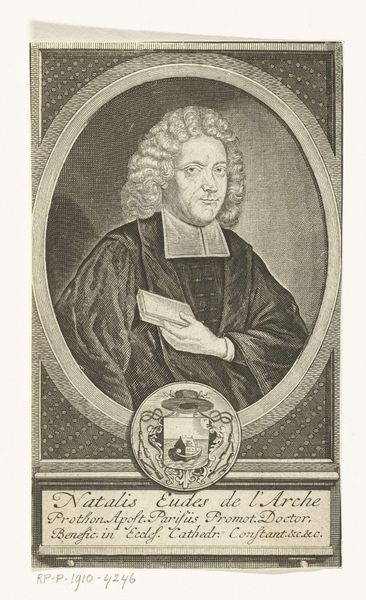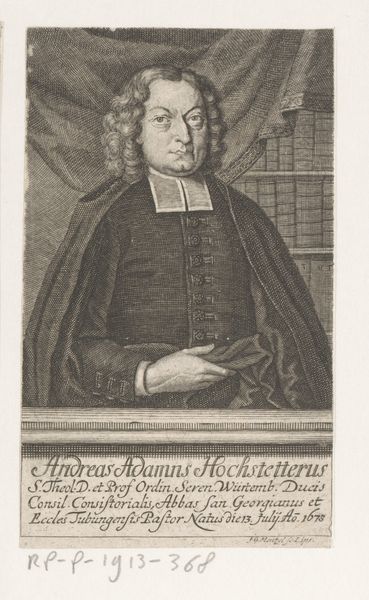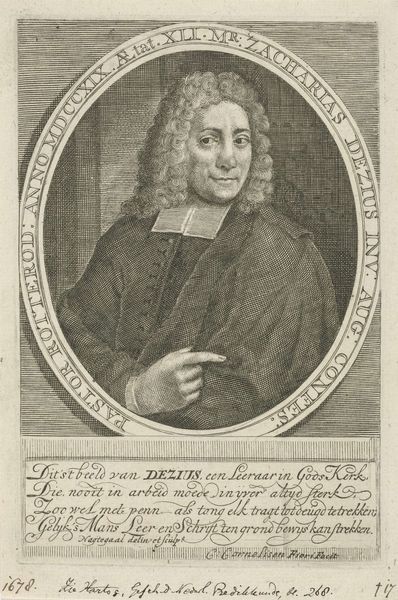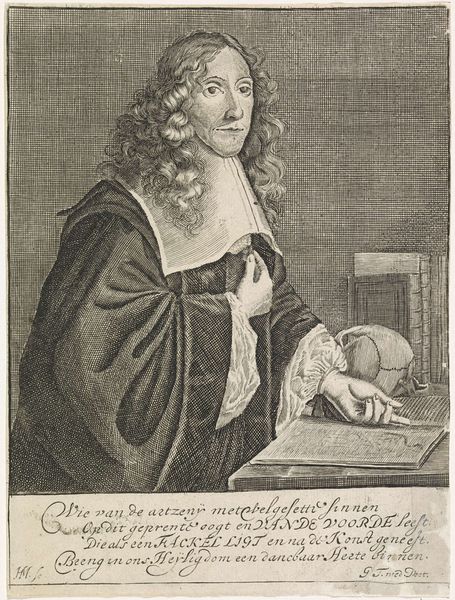
engraving
#
portrait
#
baroque
#
dutch-golden-age
#
caricature
#
historical photography
#
history-painting
#
engraving
Dimensions: height 304 mm, width 223 mm
Copyright: Rijks Museum: Open Domain
Editor: This engraving, "Portret van de predikant Gualterus Bodaan," likely dating from 1677-1685, depicts its subject surrounded by symbolic objects. What's immediately striking is the book dominating the composition—it speaks volumes, doesn’t it? What do you see in this piece, beyond just a formal portrait? Curator: The book is absolutely central. It's an anchor for the image’s symbolic weight. Think about it – what does a book represent in a portrait like this, particularly during the Dutch Golden Age? It signifies knowledge, authority, but more than that, divine revelation and the Word of God. His direct engagement with the page invites the viewer to partake in interpreting the scriptures along with him. How do the column and drapery interplay with his symbolic representation? Editor: Good point about the classical elements. They lend the image a certain gravitas and timeless quality, while still representing Dutch culture. I wonder if those design choices could give us insight on Dutch culture, beyond being decorative. Curator: Precisely! It's about the construction of an ideal. The column, associated with classical learning, speaks to an intellectual legacy while the luxurious drape hints at worldly status, but his solemn expression communicates a man in contemplation of deeper spiritual matters. What is particularly interesting to me is the text. Can you infer how the subject's symbolic representation relates to the inscription below? Editor: The poem under the portrait calls out for Jehovial wisdom to smite the Antichrist… almost aggressive, considering the seemingly serene face. So he's actively fighting for knowledge and goodness through God's word? Curator: Precisely! You can interpret the imagery as him positioning himself as a soldier for God, a defender against perceived corruption or heresy. The portrait thus communicates much more than his mere likeness, it encapsulates his core beliefs. It's a snapshot of theological identity cast in visual terms for future interpretation. Editor: That completely changes how I see this! Now the sternness makes more sense. It's no longer just a face, it’s an ideal made into an image! Thank you! Curator: And thank you for that excellent interpretation. It goes to show, there are many stories etched in symbolism to uncover, and cultural memory endures in art through time.
Comments
No comments
Be the first to comment and join the conversation on the ultimate creative platform.
